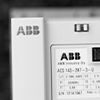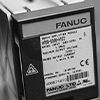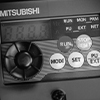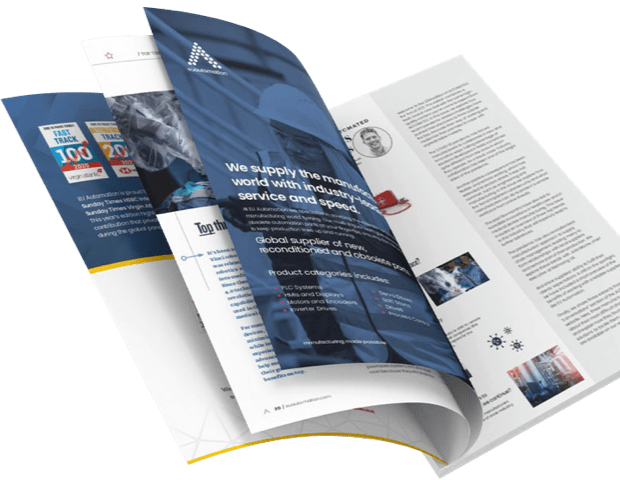A complete glossary to Product Lifecycle Management (PLCM)
July 1, 2025
In a manufacturing setting, the performance of complex systems hinges on the reliability and availability of individual components. Each product, whether it’s a programmable logic controller (PLC), a human-machine interface (HMI) or a servo drive, follows a predictable journey. This journey spans from development to obsolescence and is carefully overseen through product lifecycle management. This journey is known as the component lifecycle [1].
Understanding component lifecycles is vital for plant managers, maintenance engineers and procurement teams. Their goal is to avoid unplanned downtime and ensure operations run smoothly. But it’s not just about knowing when an OEM might discontinue a part. It's all about having a clear product lifecycle management (PLCM) plan to proactively manage that lifecycle [2].
What is a component lifecycle?
A component lifecycle is made up of several stages. These stages include development, introduction, growth, maturity, decline, end-of-life (EOL) and obsolescence. These stages reflect both the product's availability in the market and the level of manufacturer support provided over time [1].
Example: Product Lifecycle Management of an ABB ACS355 drive (with average durations)
- Launch (0–1 years) – ABB releases the ACS355 general-purpose drive to the market. This product targets machinery builders and OEMs. The design is aimed at those who need small and adjustable AC drives for a range of light industrial applications.
- Growth (1–3 years) – Adoption rises as the ACS355 as word spreads about how reliable, easy to integrate and versatile it is. OEMs and integrators start to include it as a default part in their new builds.
- Maturity (3–7 years) – The drive gets widely used in a variety of sectors around the globe. The availability of spare parts as well as firmware updates and technical documentation are all included in its support. Training and retrofit guides are well established.
- Decline (7–10 years) – ABB expands its drive family with the launch of newer models. These models come with expanded digital communication features and enhanced energy efficiency such as the ACS380 and ACS480. Although it is still maintained for current applications, the ACS355 is starting to be phased out from future designs.
- End-of-Life (EOL) (10–12 years) – ABB issues a formal EOL notice. New production halts but limited stock and replacement units may still be available through global distributors and partners.
- Obsolescence (12+ years) – Manufacturer support ends. Firmware, repair services and replacement components become increasingly scarce. It is possible for users to be faced with operational risks if spares or equivalents are not identified in advance.
Risk: Users run the danger of costly system redesigns or downtime without proactive lifecycle planning for the ACS355. This is often due to a lack of compatible replacement drives or support.

The closed-loop Product Lifecycle Management approach
In a closed-loop lifetime model, data on how components are used and how well they operate is re-used during the phases of design, procurement and maintenance. It paves the way for plans of long-term support and continual improvement across the whole lifecycle [3].
For instance, real-time failure rates or customer feedback on legacy parts can influence whether a replacement should be sourced, redesigned or retrofitted. Data continues to flow in a closed-loop system even after the product reaches the customer. This ongoing feedback loop helps teams to make better decisions throughout the component lifecycle.
Product Lifecycle Management in the supply chain
Supply chain management plays a vital role in supporting component lifecycle strategies. Here are some key best practices for integrating lifecycle thinking into procurement and inventory processes:
- Monitor lifecycle status proactively – Use manufacturer bulletins, EOL notices and part alerts to keep track of lifecycle changes [4].
- Plan last-time buys (LTB) – Make sure that the parts that are about to be discontinued have enough inventory on hand.
- Engage second sources – Stay away from relying on only one supplier for critical parts.
- Digitalise inventory – Get a better sense of what's going to be in demand and how components are doing by integrating ERP and inventory management systems.
Including lifecycle thinking into your procurement workflows can help reduce the risk of supply interruptions. This approach can also prevent production halts caused by unavailable parts.

Benefits of effective Product Lifecycle Management (PLCM)
Implementing a well-structured Product Lifecycle Management (PLCM) is vital. It serves not only as a preventative measure but also as a strategic advantage.
When integrated into maintenance, procurement and supply chain operations. PLCM has the potential to change your approach to managing risk. It can also enhance how you allocate resources and plan for the future. A successful program yields major benefits:
- Reduced downtime – Preventing costly downtime is possible through planned maintenance and the prompt sourcing of replacement parts.
- Cost efficiency – You can better manage your budget if you avoid making reactive purchases or using emergency sourcing.
- Regulatory compliance – Staying ahead of obsolescence ensures that only compliant, up-to-date parts are used.
- Improved asset longevity – Knowing which parts need to be replaced or upgraded helps extend the life of the system.
- Enhanced visibility – Lifecycle dashboards give procurement and engineering teams a clear view of risks and requirements.
Challenges of Product Lifecycle Management (PLCM)
The benefits of PLCM are obvious, but it is not always easy to set up and keep running well. It requires coordination across different departments, access to timely and accurate data. There must be flexibility to adapt to changing supplier landscapes. Despite the advantages, PLCM doesn’t come without its hurdles:
- Data fragmentation – Lifecycle data is often siloed across departments or trapped in PDF bulletins.
- Supplier communication – There are certain OEMs that are slow to send out end-of-life alerts.
- Legacy system dependency – It can be quite a challenge to repair or replace the obsolete components used by older automation systems.
- Short product cycles – In some automation segments, technology evolves quickly, increasing obsolescence pressure [5].
- Resource intensity – Managing lifecycle data and coordinating replacements can strain in-house teams.
Many manufacturers seek assistance and knowledge from external lifecycle partners in order to tackle these difficulties.
What does a PLCM program involve?
It takes effort to have an effective PLCM program. Effective cross-functional communication, trustworthy data, and a well-defined plan are vital. It lays out the groundwork for proactive risk management, less downtime and guaranteed operational continuity in the long run. A well-structured PLCM program typically includes:
- Lifecycle mapping – Keeping track of the current lifecycle stage of every critical component in your operation.
- Criticality assessment – Assessing the most critical parts and the potential damage they could do if they were to fail or go obsolete.
- Obsolescence forecasting – Looking at trends, manufacturer updates or part age to predict which components are likely to be discontinued.
- Replacement planning – Defining alternative parts, retrofit kits or upgrade paths before EOL hits.
- Supplier collaboration – Coordinating with vendors to ensure smooth transitions and consistent availability [6].

Glossary of terms
Engineering & technical terms
- Backward compatibility – How well newer systems and components can work with older legacy systems and parts.
- Bill of materials (BOM) – A structured list of components, parts and materials used to build a product. Lifecycle and obsolescence management of a product depends on this.
- Functional equivalent – A replacement part that performs the same function, though it may differ in specifications or appearance.
- Custom retrofit – A modified component that has been modified or adapted to meet the needs of an older system.
- Upfit – Adding additional or better parts to an existing system to make it work better or last longer.
- Backward engineering – The process of designing a solution based on the specifications of existing or obsolete equipment.
- Legacy system – A system or piece of equipment still in use despite being based on outdated or unsupported technology.
Manufacturing & product management
- Phase-out plan – A structured plan by manufacturers to discontinue a product allowing time for customer preparation.
- Design freeze – When a product reaches its end of life, it can no longer have its design altered in any way. This is typically just before mass production.
- Rev level (revision level) – A version control indicator for components; changes often mark lifecycle stage transitions.
- Design for obsolescence – An intentional strategy in which products are planned to be obsolete after a specific amount of time has passed. This is controversial in sustainability discussions.
- Second source – A different manufacturer that is capable of making the same part. This helps lessen the danger of becoming too reliant on any one supply.
Procurement & supplier strategy
- Bridge buy – A procurement strategy where companies buy enough stock to cover the gap between EOL and the availability of a new solution.
- Sole source / single source – When a part is only available from one supplier increasing lifecycle management risk.
- Dual sourcing – The practice of qualifying two suppliers for the same part to reduce dependency and risk.
- Cost of obsolescence – The financial impact of product downtime redesign or expedited sourcing due to obsolete components.
- Long lead time component – A part that takes an extended time to procure especially relevant as products near obsolescence.
- Spare parts (Spares) – Inventory of replacement parts kept on hand to support repairs and ensure uptime throughout a product's lifespan.
- ERP system (Enterprise Resource Planning) – Business management software that integrates lifecycle tracking with inventory, procurement and maintenance workflows.
Compliance & documentation
- Compliance risk – The risk that using legacy or obsolete parts may violate current environmental or safety regulations.
- Traceability – Being able to trace the origin, usage history and lifecycle stage of a component. This is crucial for regulated industries.
- Change control – The formal process of reviewing and approving modifications to a component’s specifications or sourcing.
- Obsolescence notification – A formal manufacturer communication that a product is nearing or has reached end-of-life.
- Product Change Notice (PCN) – A notice from the manufacturer that lets customers know about upcoming changes to the product's qualities, specs or availability.
- Cancellation notice – The last official document from the manufacturer stating that the product has been fully discontinued and that official support has ended.
Sustainability & circular economy
- Reconditioned component – The process of restoring and testing a used part such that it meets the original standards. This is a sustainable alternative to new parts.
- Reclamation / salvage – The process of recovering parts that can be used from systems that have been decommissioned.
- Circular supply chain – A supply chain model that takes into account the potential of component refurbishing, recycling and reuse in order to lengthen their lifecycles and reduce waste.
- Lifecycle assessment (LCA) – A method of evaluating the environmental impacts of a component across all lifecycle stages from production to disposal.
Strategic & analytical terms
- Proactive obsolescence management – A plan to keep operations and supplies running smoothly by spotting potential problems early in their lifecycles.
- Obsolescence forecasting – The use of trend data, supplier updates and part age to predict when components will be discontinued.
- Lifecycle cost analysis – A technique that is used to determine the overall cost of ownership of a part. This includes its purchase, maintenance and eventual replacement.
Widely used lifecycle status terms
- Active – The part is fully supported and in standard production.
- Active mature – Still available but no longer recommended for new designs; a signal that EOL may be approaching.
- Limited – Usually in the lead-up to a phase-out, the product is only offered in limited quantities or under specific conditions.
- Phase – Often used to denote transition stages such as "in phase-out" or "phase-down" before formal discontinuation.
- Discontinued – There will be no further production or sales of this product.
- Obsolescence – Indicates that the product is no longer available or supported and should be replaced in active systems.
- Retired – Fully removed from product catalogues and systems; historical reference only.
- Cancellation notice – The manufacturer's official statement on the end of the product's lifespan and discontinuation.
- Sunset product – A product that is getting close to its end of life in the market, sometimes temporarily kept for legacy support purposes only.
References
- IPC (2016). IPC-1782: Standard for Manufacturing and Supply Chain Traceability. https://www.ipc.org/TOC/IPC-1782.pdf
- Z2Data. Understanding Obsolescence in the Electronics Industry https://www.z2data.com/insights/understanding-obsolescence-in-the-electronics-industry
- Oracle. Closed-Loop Automation in Communications and Manufacturing. https://www.oracle.com/communications/closed-loop-automation/
- Supply Chain Nuggets. Product Life Cycle and Supply Chain Management. https://supplychainnuggets.com/product-life-cycle-and-supply-chain-management/
- Lifecycle Insights. The Advantages of Closed-Loop Service https://www.lifecycleinsights.com/resource-library/the-advantages-of-closed-loop-service/
- IEC. IEC 62402: Obsolescence Management - Application Guide. https://webstore.iec.ch/publication/59531











